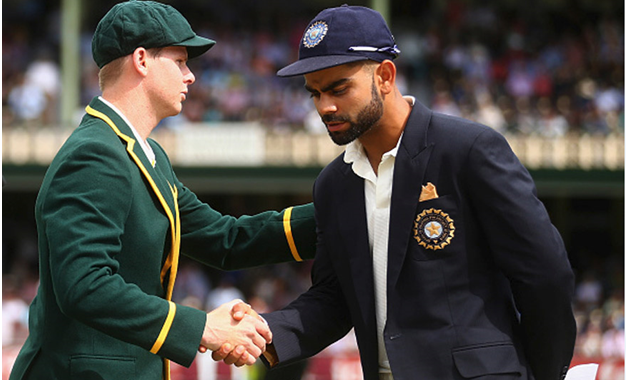Has Australia Got The Wrong Bowlers For the Indian Tour?
Despite Bangladesh’s improved performance of late – highlighted by their victory over England about three months ago – it should not be difficult for India to get the better of their neighbours who are set to play their first-ever Test in India since their debut in 2000.
The one-off game at Hyderabad should serve to give Virat Kohli and his men who are riding a crest of success some useful practice before the real test begins – the four- match series against Australia from February 23.
Not that the Australians are optimistic about succeeding in India. Advance reports from 'Down Under’ have been all about analyses as to how tough it is going to be for Steve Smith and his men in this country. And part of this pessimism stems from the fact that the selectors might have got the bowling combination wrong for the contest against India.
Indeed one cannot exactly comprehend what the Australian selectors were thinking about while picking the team to tour India. The horses for courses theory is fine if the players have the necessary qualities but in picking four spin bowlers for the trip one gets the distinct feeling that the selectors have only made it tougher for the team management.
Playing to your strengths is the key to winning matches and Australia’s traditional strength has always been pace. Even when they won their last Test series in India in 2004 it was pace that paved the way. Glenn McGrath and Jason Gillespie had more success than Shane Warne who in any case has a poor record in this country taking only 34 wickets in nine Tests played over three visits and at 43 apiece. The team to win a Test series in India before that - South Africa in 2000 - also had the bowling of pacemen Allan Donald and Shaun Pollock to thank.
Over the years visiting teams who have done well in India have had to depend on their fast bowlers to deliver. Very few spin bowlers have succeeded in India for despite the rather helpful nature of the pitches the fact that Indian batsmen are probably the best players of spin bowling in the game has spoilt their figures. The notable recent exception was 2012 when Monty Panesar and Graeme Swann played a leading role in their team’s unexpected 2-1 victory.
But then Swann was a class apart while Panesar otherwise an ordinary bowler for once got everything going for him. Of course their task was made easier by the shocking failures of three leading Indian batsmen Sachin Tendulkar, Yuvraj Singh and Kohli. .
Even a cursory glance at the records of the spin quartet picked for Australia – Nathan Lyon, Ashton Agar, Steve O’Keeffe and newcomer Mitchell Swepson – and one can stick his neck out and predict that it will be very tough going for them against Kohli and company.
At the same time one can predict a more successful outing for the likes of Mitchell Starc, Josh Hazlewood and Jackson Bird. But a fourth fast bowler should have been picked for the tour to relieve the workload of the trio. Now the risk is that they will be overbowled in the absence of an adequate spin attack.
With this kind of bowling line-up it is quite likely that the Indians would put up huge totals and so the onus will be on the Australian batsmen to deliver. With the likes of skipper Steve Smith, David Warner, Matt Renshaw, Usman Khawaja, Peter Hanscombe and Shaun Marsh in the ranks they certainly have the credentials to match the Indians. But their recent wretched record in Asia bodes ill for them. Pakistan made a clean sweep of the two-Test series in the UAE in 2014, Sri Lanka made a clean sweep in the three match series at home last year while as is all too well known Australia lost all four Tests in India four years ago. Batting failures compounded the ineffectiveness of the bowling leading to the lop-sided results.
It is difficult to see a change in the scenario this time. The Indian batting line-up is functioning like a well oiled machine. Whatever their limitations abroad at home they are a formidable opposition. And facing the duo of Ravi Ashwin and Ravindra Jadeja could well be a repeat of the nightmare that the Australian batsmen encountered four years ago when the two shared 53 wickets between them. This is not to underplay the role of the Indian seam bowlers who are also capable of vital strikes.
All in all it will take a miracle for Australia to get the better of India despite the fact that they are ranked No 2 just behind the hosts in the ICC Test rankings. The visitors cannot even take comfort from their previous record in this country. The triumph in 2004 - ''conquering the Last Frontier’’ as it was hailed – remains their only Test series victory in India for almost half a century. Since 2004 in fact they have played ten Tests in India, losing eight and winning none and that is as abysmal as it gets.





